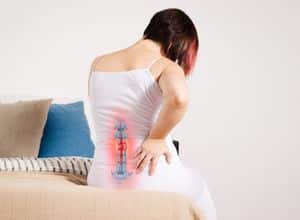Dealing with Pain: The Role of Support Systems and Counseling

Experiencing pain can be an overwhelming journey that affects many facets of daily living. Whether it's acute discomfort from an injury or the persistent agony of long-term ailments, pain can lead to restrictions on movement, mental anguish, and a lowered quality of life. Thankfully, advances in pain relief strategies and interventions offer hope and relief to people experiencing discomfort. Understanding the meaning of pain management entails and recognizing the various approaches available are important first steps in recovering a life without pain.
In this article, we will explore the different types of pain and the best management strategies available. From acute to chronic pain, each form of discomfort requires customized approaches that may include a blend of therapies, medications, and supportive care. By investigating the science behind pain and evaluating the role support systems play, we can uncover valuable insights into how people can navigate their pain journeys with increased fortitude and knowledge. Whether https://parrish-emerson.hubstack.net/examining-acupuncture-in-pain-therapy-fallacies-and-facts are considering physical therapy options, non-traditional therapies, or focused pain clinics, the detailed resource ahead will illuminate the path to wellness.
Understanding Pain Control
Pain management is a integrated approach to evaluating and addressing various types of pain. It encompasses a range of therapies and interventions aimed at alleviating pain and boosting the well-being for people suffering from short-term or chronic pain. By recognizing what pain is and identifying its specific types, healthcare providers can adapt treatment plans that address individual needs, helping individuals reclaim control over their lives.
Severe pain typically arises from a particular injury or health issue and is often short-lived, while persistent pain continues over time, sometimes for months, often without evident cause. Effective pain control acknowledges these variations and utilizes multiple strategies, including drugs, rehabilitation, and integrative approaches, to provide relief. Comprehending these variations is essential for deciding the most effective management technique for each individual.
Furthermore, pain treatment often necessitates a collaborative effort between healthcare providers, including physicians, physical therapists, and mental health professionals. This collaborative framework guarantees a comprehensive treatment approach that not only focuses on physical symptoms but also addresses emotional aspects of pain. By fostering a supportive environment, patients are empowered to take part actively in their recovery process and make knowledgeable decisions about their physical and mental health.
Therapies and Methods for Pain Relief
Effective pain relief often entails a mixture of therapies tailored to an individual's particular needs. One of the most widely recognized strategies is physical therapy, which focuses on strengthening muscles, enhancing flexibility, and boosting mobility. Through specific exercises and techniques, physical therapy can alleviate persistent pain conditions such as lumbar pain, arthritis, and fibromyalgia. Patients often report a dramatic reduction in pain levels and increases in their ability to engage in everyday activities.
Additional therapies also are important in pain management. Chiropractic care, for instance, highlights spinal alignment and can be particularly beneficial for those suffering from musculoskeletal pain. Similarly, massage therapy offers a manual approach to relieving tight muscles and improving circulation, providing quick comfort and relaxation for many. Acupuncture, an time-honored practice that involves inserting fine needles into specific points on the body, has gained acceptance for its capability to activate the body's natural pain-relief mechanisms and reduce overall discomfort.
In addition to these body-based therapies, there are a multitude of alternative treatments to consider. The growing interest in CBD and medical marijuana highlights the move towards more organic options for alleviating pain without conventional opioids. Furthermore, mindful awareness and meditation techniques are gaining recognition for their ability to manage stress and, eventually, diminish pain levels. Each of these approaches contributes to a integrated approach, allowing individuals to take charge of their pain management journey.
Living Methods and Assistance Systems
In managing pain, living approaches play a critical role alongside professional therapies. Regular physical activity, for example, can boost mobility and reduce discomfort, particularly for those dealing with long-term conditions such as arthritis and lower back pain. Activities like hiking, swimming, and yoga can strengthen muscles, enhance flexibility, and release endorphins, which naturally alleviate pain. Integrating healing foods into one's diet can also help lower overall pain levels by decreasing inflammation, offering a twofold approach to managing discomfort.

Support systems, including family, friends, and healthcare providers, significantly influence an individual's skill to cope with pain. Psychological support can lead to improved pain management outcomes by encouraging a constructive mindset and reducing stress. Joining aid groups can provide a feeling of community and shared experience, which can be therapeutic in itself. Having someone who understands the struggle of living with pain can make a significant difference in how individuals perceive and cope with their condition.
Psychological health also plays an integral role in pain management, highlighting the necessity of a well-rounded approach. Mindfulness and meditation can help individuals cultivate coping strategies that lessen the psychological and psychological burden of chronic pain. Engaging in soothing techniques can lessen stress levels, which often exacerbate pain sensations. Combining these lifestyle changes with a robust support system creates an environment conducive to healing and enhanced quality of life for those dealing with ongoing pain.
